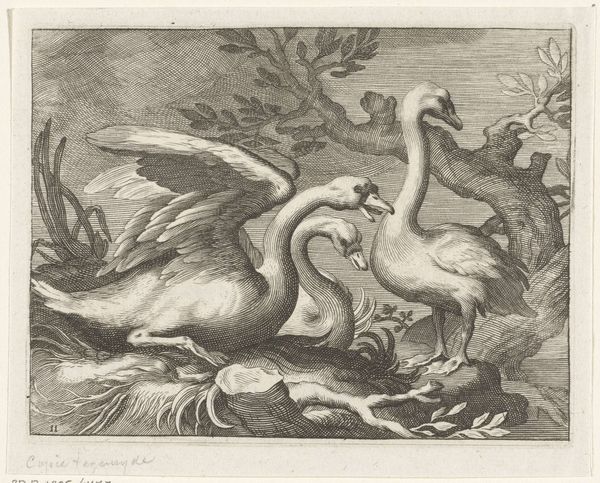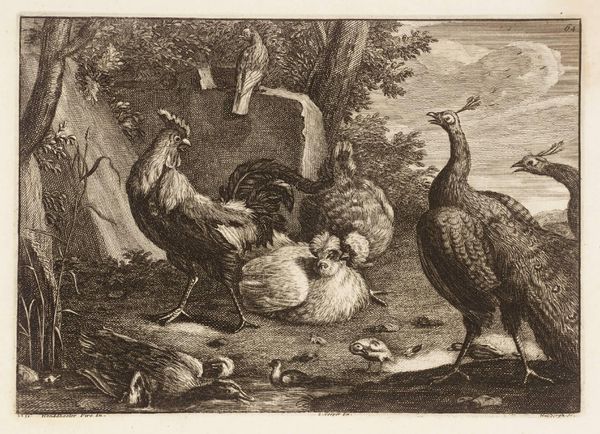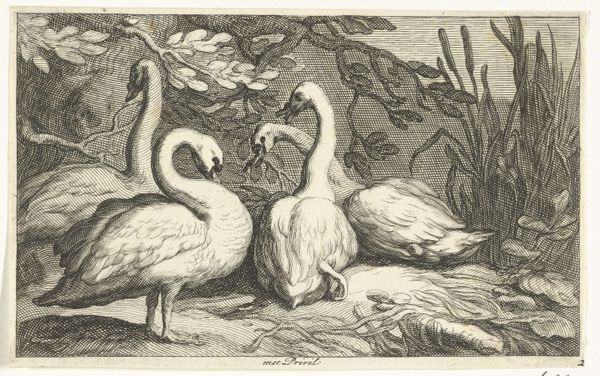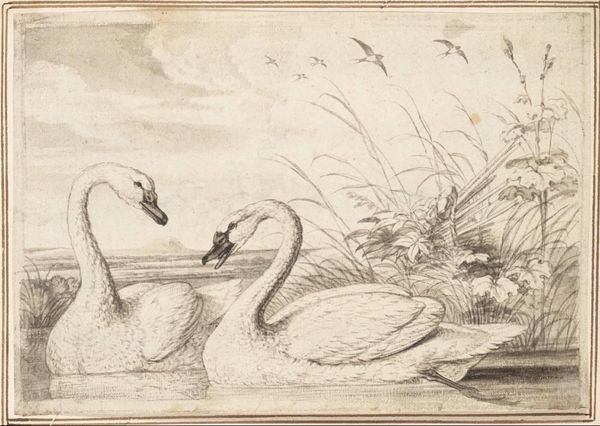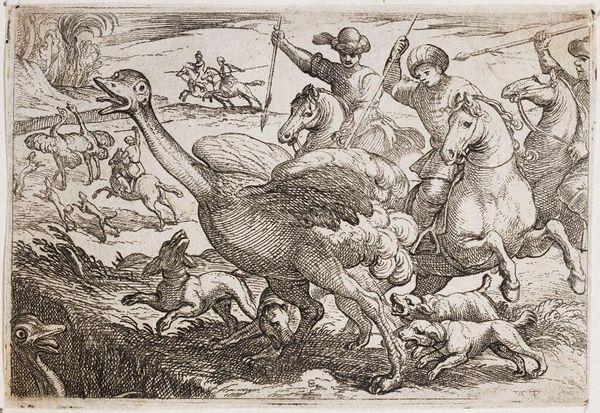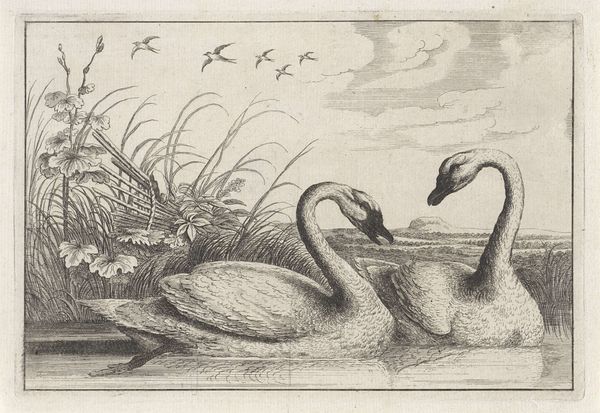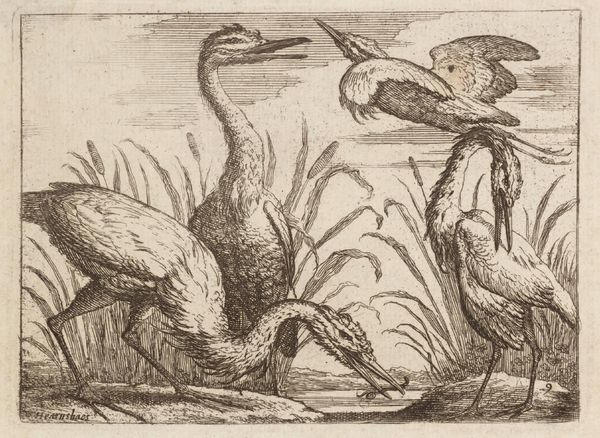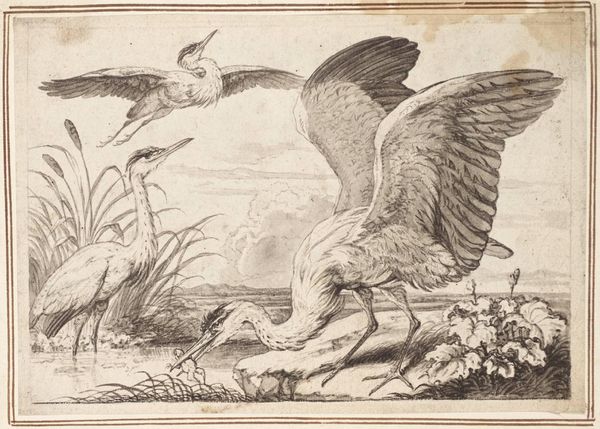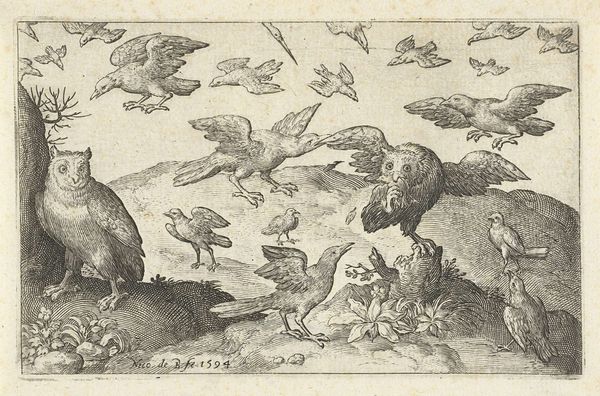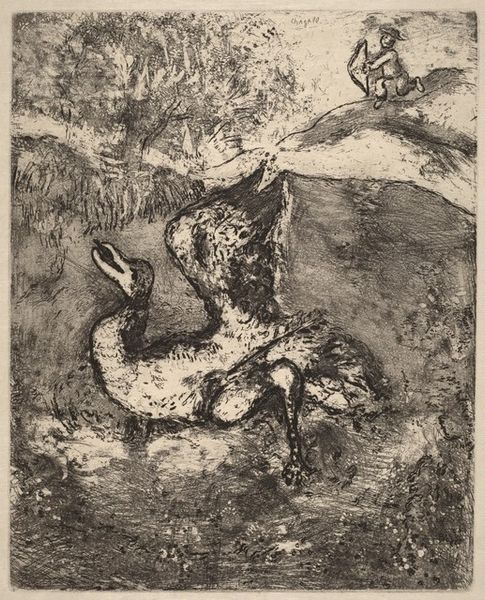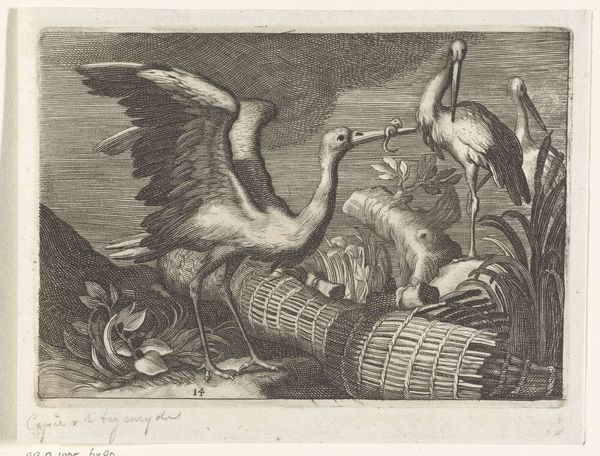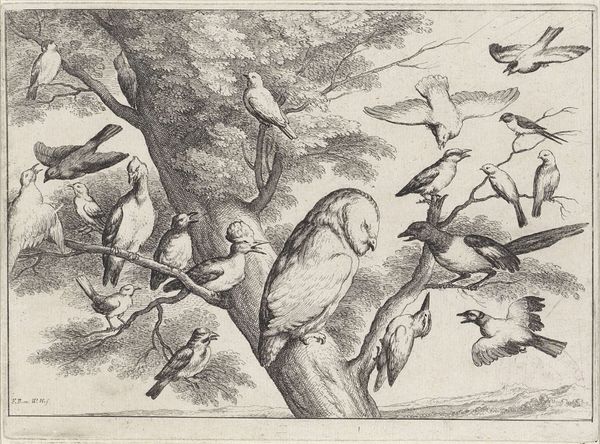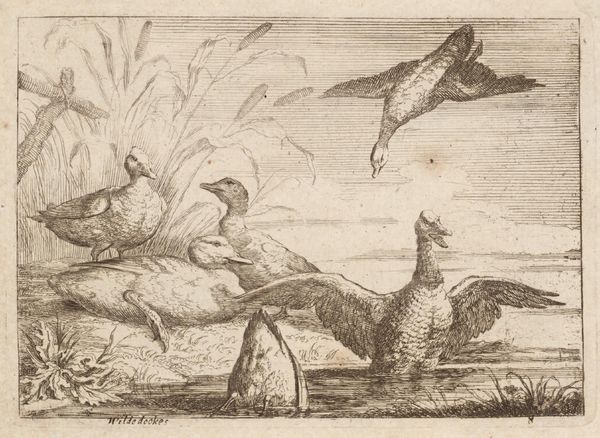
painting, oil-paint
#
baroque
#
animal
#
painting
#
oil-paint
#
bird
#
oil painting
#
water
Copyright: Public domain
Editor: Here we have Melchior d'Hondecoeter's "Swans and peacocks", an oil painting featuring a gathering of elegant birds. The contrast between the brilliant white swans and the iridescent peacocks immediately grabs your attention. How might we interpret this piece considering the historical context of its imagery? Curator: Considering d'Hondecoeter's time, we can see this not just as a collection of pretty birds. The late 17th century Dutch Republic saw a burgeoning wealthy merchant class. Could these exotic birds function as symbols of status and global trade? The ownership of such animals, or even representations of them, visually signaled prosperity and international connections. Editor: That makes a lot of sense. It's interesting how what seems like just a pretty scene can reflect broader social currents. Do you think the specific arrangement of the birds carries significance? Curator: Definitely. Think about where paintings like this were displayed - grand homes intended to impress. The assertive, almost confrontational, posture of some of the birds, particularly the swans, could be read as a projection of the owner's power and control. Are they simply decorative elements or potent symbols designed to communicate social standing to visitors? Editor: So, beyond the aesthetic appeal, the artwork is making a statement about wealth and status in Dutch society? Curator: Precisely. These images weren't neutral; they were carefully crafted to perform a social function. And understanding that adds layers of meaning beyond the simple depiction of birds. Editor: It's fascinating how analyzing the social and political environment illuminates the deeper meaning embedded in seemingly simple scenes. Thanks for that insight. Curator: My pleasure. Examining the artwork through its historical setting always offers valuable perspective.
Comments
No comments
Be the first to comment and join the conversation on the ultimate creative platform.
